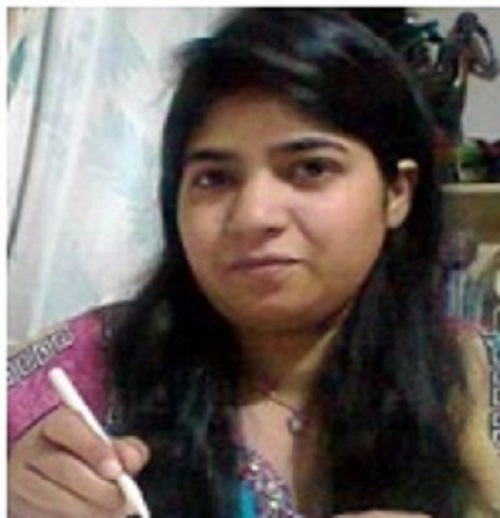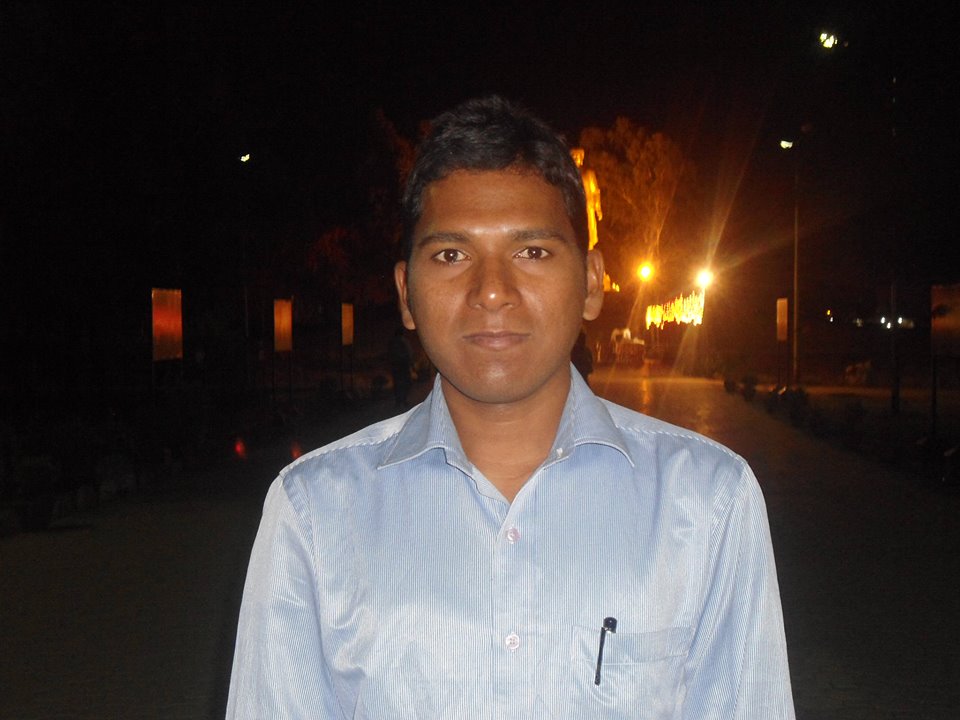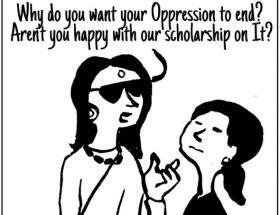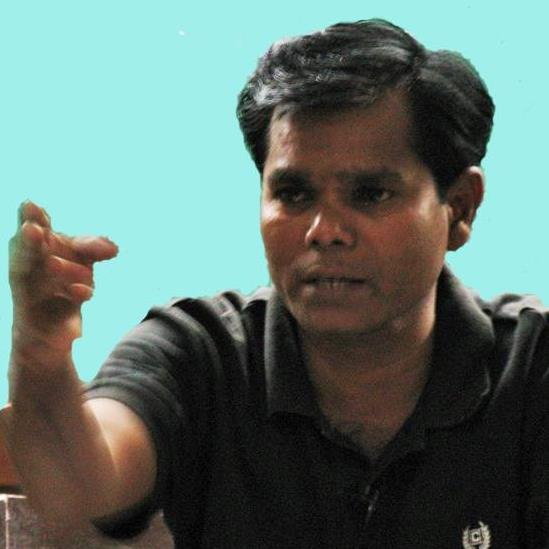Kamna Sagar
 The caste framework in India has stood out as the biggest element of social stratifications. Caste, class, and gender are indistinguishably associated, they speak with and overlap each other. Numerous parts of the human condition are profoundly influenced by the stratified examples of the rank framework. Alongside Gender stratifications that characterize numerous social relations, caste-based position framework is profoundly established in numerous parts of our life.
The caste framework in India has stood out as the biggest element of social stratifications. Caste, class, and gender are indistinguishably associated, they speak with and overlap each other. Numerous parts of the human condition are profoundly influenced by the stratified examples of the rank framework. Alongside Gender stratifications that characterize numerous social relations, caste-based position framework is profoundly established in numerous parts of our life.
The Caste development is a part of the social structure that goes before Independence. It is an express arrangement of separation in the administration of the mastery of financial assets, social power etc. Caste capacities as standard law combined with a socially overwhelming confidence in its ‘truth’. Extensively talking there are three frameworks having an effect on everything in my mapping: Caste development, class structure and the state. I have portrayed each of them as indicated by their belongings as far as social inclination, personal involvement and working of the state.
To the degree that it surpasses straightforward financial inquiries, position encompasses and stretches out past what was known as a ‘method of generation’. It is a framework that distributes esteem, control what’s more, riches from one perspective, and work, subjugation and abuse on the other. Caste laws guarantee through its different methodologies, the inherited transmission of benefit, riches and chance to those who have the inherited de strengthening from these merchandise among the individuals who do not have the same. The social entrenchment of station implies that it is greatly hard to battle since there is a regular hone that verifiably authorizes its preeminent intimidation to the exclusion of all else.
Ambedkar as the fundamental architect of the Constitution of India looked to assemble arrangements to incorporate caste inquiries. Untouchability was canceled, so was the act of separation in any shape from open spaces. In any case, in rehearse untouchability and caste separation keep on persisting out in the open furthermore, private circles of regular daily existence.
Changes in the socio-political structure after freedom, change in the landholding design through land change and the development of new class structure have moved the caste and gender elements of post independent India. New caste conditions have emerged in this period. Under Nehruvian vision of innovation, India was occupied with the country making venture. The caste and sexual orientation address wind up plainly submerged under the venture of country making and advancement.
Post independent India has likewise seen the development of standing associations, new types of declarations (e.g. Dalit Panther Movement) and the rise of women’s activist assemblages (self-sufficient ladies’ development). The crossing points of sexual orientation and caste which Periyar and Ambedkar had tended to in their work did not get sufficient consideration amid this period of new types of sex and caste statements. Post Mandal banter moved towards becoming another urgent marker where the talk of caste and gender differences broke down, what’s more, enunciated. Rise of caste based gatherings was another huge move in the level headed discussion of caste and sex.
The explanations of caste and gender in contemporary India are both complex and regularly conflicting. We have seen women’s consistence to Brahminical social request by subjecting themselves to the control of Brahmanical patriarchy. The counter Mandal trademarks of women understudies are most certainly not autonomous episodes of women’s consistence to patriarchal-Brahminical arrangement. On the off chance that we take a gander at ladies today their lives are situated at the crossing point of class, caste and patriarchy. These structures can push all work to mistreat them, as on account of Dalit women’s, yet, most other women’s are situated in a way that they can be both subordinated and furthermore use a level of energy.
The structure of marriage is the essential premise of the caste framework. It is additionally major to the way imbalance is managed. Caste framework as an arrangement of consensual qualities; an arrangement of qualities acknowledged by both overwhelming and ruled. Ambedkar’s plan of caste framework is a arrangement of ‘reviewed imbalance’ in which castes are organized by a rising size of respect and slipping size of scorn. This definition by Ambedkar gives an investigation of the power progressions vested on the philosophy of caste framework. This definition as ‘reviewed disparity’ too sees how caste belief systems give a base to the social abuse in the lives of men and women, particularly Dalit women’s. Position in that sense is extremely distant from a simple monetary abuse.
Disparity in light of expected custom virtue and monetary disparity both exist together to sustain the caste framework. To get the connection amongst caste and class, it is critical to perceive the two orders which are the agents in the Indian setting, one in light of the custom immaculateness with the Brahmans on top and the other in light of the political and financial status with the landowner of high priority. There are three ways which explained the relationship between caste and gender. These occurrences are unique in time and space. First, in 1950s the ‘Brahman Parishad’ which spelt out the set of accepted rules for upper position of their women. Secondly, the discourse amongst dalit and non-dalit women activists is the unique circumstance of India. Thirdly, in which caste and sexual orientation show up in resistance alludes to media and society reactions to the governmental issues of assault and remuneration of Dalit women in many parts of India.
Give us now a chance to take a gander at the key ideas and open deliberations concerning the interconnections amongst sexual orientation and caste i.e., endogamy. Endogamy is the act of wedding inside a similar rank, one of the noteworthy routes in which caste progressive systems are kept up and honed.
Upholding social codes through the strict routine with regards to endogamy prompted greatly gendered viciousness in India. Investigating the across the board marvel of gendered viciousness, noticed that between caste and intermarriages which damage social standards and standard practices of the society perpetually prompt direct viciousness upon the couples and the group who encroach those standards or remedies. Ambedkar’s dialog of endogamy additionally characterizes an essential move in social relations.
The philosophy of respect i.e. Izzat is a gendered idea which regularly entangles the philosophy of standing. Men and ladies epitomize the thought of respect in diverse ways. The inseparable connection between standing endogamy and savagery can be seen in different consultations of Khap panchayats sustaining savagery against youthful couples who transgress the strict limits of caste framework. For instance, in 2013 Tamil Naidu Death of a young Dalit man focuses towards the path in which belief system of respect and strict endogamy turns into the solid connection between numerous caste-based savagery in India.
However, it is noticed that viciousness against women in the public is constantly dedicated because of the social articulations of the bigger group. The complicity of upper caste and high society ladies in brutality propagated by their men folk against lower position is camouflaged by their own class/station intrigue additionally profoundly disguised by codes of “respect” and ‘Izzat’. Inside the overwhelming upper rank belief system “Izzat” is a medieval patriarchal idea firmly connected to women’s” sexuality and possession of patriarchy. It has been conjured in different examples to controls women’s sexuality in different settings.
“The Khap Panchayats- an additional legal body- target couples who transgress the limits of conventional standards of marriage, by being brave to wed outside the caste. The Khap panchayat appears to manage infringement of social standards entirely, giving out discipline, for example, ejection from the caste, honour killings. Women as a rule bear the brunt of the brutality”.
Through this open show of manly collectivity, animosity and solidarity-ruled and managed by a center gathering of elderly men-these Khap panchayats legitimize and support manly chain of importance. In the period of globalization these masculinities and this aggregate animosity turns into a device to get authenticity to manly power which is as of now under emergency.
The consistence of women reflects a viewpoint of maintaining/implementing the social codes which are imperceptible structures of our public. Women are in charge of maintaining the way of life or convention by fitting in with the structures; on the other hand, men maintain convention by authorizing codes or structures on the women.
Women, the individuals who comply with the principles relate to arrangement of nourishment and keeping up sustenance immaculateness is regarded also, by doing as such they propagate/fortify station confinements at home. Marriage, propagation, and sustenance are diverse inward structures of the family unit under which the position framework gets recreated. Aside from inward association of the family unit, the crossing point of position and sex has reference to people in general space too.
The mind boggling connection amongst sexual orientation and rank in contemporary India helps us to scrutinize the myth of patriarchy as a solid idea and additionally challenges the class “women’s” as a solid element. As we have found in the above cases upper caste women’s consistence in keeping up Brahmanical social request advises us of the need to address the question of “distinction” explained by numerous third world women’s activists and Dalit women’s activists.
The wave women’s activist motto of ‘sisterhood is general’ is disassembled by the explanations of “distinction” by numerous Dalit women’s activists. Dalit women’s activists’ investigate of standard women’s activist allotments of their issues too added to this explanation of distinction. These open deliberations are vital turning points in the explanations of the intricate connection between gender furthermore, caste in contemporary India. The rise of ladies’ associations in the 1980s and their reconstitution of women’s activist governmental issues in India additionally cleared the route for re-verbalization of gender and caste inquiries in contemporary and modern India.
Experiences of Caste
Caste works on the person through shame and discipline – up to and including passing death. Caste pieces portability and guarantees social crystallization inside particular edges of position separation. As Ambedkar put it, ‘Caste is a division of workers’. It guarantees the various leveled degree of occupations, with imperceptible, yet clear outskirts that may not be crossed by the individuals who don’t have a place.
It is experienced by the Dalits and other marginalized Caste/tribes groups as mortification, treachery and viciousness. Position is experienced by the prevailing as “legitimized” fury against the individuals who cross social limits; possess prime land and managerial areas and benefit of “undue” open door. The wellspring of this systemic wrath is as undetectable as it is diffuse and far reaching.
The individual concentration of capital’s social predisposition is from one viewpoint, detainment (or discipline more for the most part) for the individuals who obtain property wrongfully. Free enterprise wouldn’t bode well if the laws of property and the privilege to private property were not maintained by state viciousness.
This is on the grounds that both deal what’s more, buy of any sort of property (be it arrive, grain, garments, lodging, vehicles, frill) would be invalidated if the individual who purchased the property were not ready to assert legitimate proprietorship to it, i.e., if somebody were essentially ready to remove it from him by drive. The opposite of regard for private property, is lack of regard for the individuals who don’t “win” property, i.e., for the individuals who access any type of property as granted. “Capitalist individual concentration against fairness appears as lack of regard for the individuals who gain any property (the lowest pay permitted by law, nourishment or fuel endowment, social insurance, training and so forth.) through welfare and state redistributive means”.
Role of State
Now, let me in an expectant manner propose that the Caste arrangement meddles with the state on issues of freedom and uniformity, and fortifies the working of the state where it is abusive. The improvement state in India has particular standard driven projects that emerge in the authentic states of India’s Independence. Norm driven projects are those that attempt to accomplish a factual objective of “goodness” in particular parts of society: e.g., instructive capability, wellbeing, and proficiency, family measure, GNP per capita, and so on.
However, it implied that the advancement state had two capacities – increment financial development and furthermore redistributes riches to a little degree to guarantee that hatred was controlled. This was the rationale of the five year arranges: center industry, capitalization, from one perspective, and nourishment security, essential medicinal services, all inclusive essential instruction, and so forth., on the other.
Another imperative chronicled condition was that the flexibility development obliged the state to join positive segregation in the area of standing and social equity, for instance reservations in training, government employments and parliamentary portrayal. This history is woven into the self-reconstruction and authority of Hindu upper position control in the opportunity development. Station domination is hitched vitally to the minimization of the discouraged classes and the minorities through various “social” also, political activities like satyagraha, the act of seva and the fight for swaraj. It is thus of the bargains and arrangements for political authenticity (i.e., the certain privilege to control) that the Indian Constitution has made space for the arrangements against untouchability and upper rank persecution what’s more, for bookings for the discouraged classes and tribals.
Nevertheless, the cutting edge Indian state as a quintessential illustrative of the Third World moreover puts into impact negative segregation on a wide territory: as far as populace control among the poor, deserting even with calamity, the surrender of sense of duty regarding a lowest pay permitted by law and the in formalization of work. The development state’s sure separation to guarantee a level playing field (widespread medicinal services, reservations) and privileges of fairness among residents (appropriate to pride, work and habitation anyplace in the nation) are contradicted by the developing types of social mastery. Its negative oppression on the poor, particularly in the neoliberal symbol after the 1990s is escalated by these same types of mastery.
All the more particularly, where do the Dalit and marginalized groups experience negative segregation? They do as such definitely at those focuses where they are given the advantage of positive segregation by state arrangement to guarantee a level playing field under free enterprise. For instance, Dalit understudies locate the most serious separation in world class foundations like the AIIMS, the IITs and Central Universities. The term used to shield this separation is obviously ‘merit’. Dalits are not “meritorious” as indicated by Brahmanical intelligence. What does ‘merit’ remain for?
What is the connection between the ideological arrangement of upper standing thought and the neo-liberalism that is the premise of industrialist belief system today? I can’t help suspecting that as a rule, there is a multiplying of upper position thought and liberalism so that there is a great degree well suited equivocalness in the expectations behind any upper standing method of considering. For instance, the standing scorn and fury against reservations is effortlessly moved into the ideologically and all around more satisfactory (however hypothetically lacking and uniquely essential) expression of the “defended” outrage of individualized legitimacy.
Here the upper caste choice on what the poor merit as far as regard what’s more, care, and how they and the cash they bring from the legislature will be utilized for a definitive advantage of the healing facility and specialists is promptly converted into a liberal lack of respect for the individuals who gone ahead government granted. Along these lines, upper caste philosophy is covered by neoliberal figure of speech in such a way that the Indian decision tip top are once in awhile scrutinized for the abominable separation that exists in the name of Indian liberal majority rules system. It shows up as though the oblivious system of an upper caste thought will veil its verbalization and development at each progression, in a neoliberal dialect.
The shifted encounters of separation frame an example in the lower caste personality. This separation and mortification are viewed as an organized system; however no individual strategist or adversary controls all cases. They result in weakness, outrage, dissatisfaction, and debilitation. Along these lines the Dalit needs to always go up against and surmount the social drive that tries to make him feel undesirable, unvalued, and useless. In the end, separation here is organized to make a man come up short at the venture of turning into a current subject as guaranteed by the Constitution. It tries its best to handicap the lower caste individual and make them unfit to end up plainly an individual from the tip top in entrepreneur society (caste plan). Accordingly, separation breaks the soul of majority rules system.
Dalit governmental issues are a battle against this gap fortification of monetary mistreatment, social exclusion and political segregation. It is a fairly interesting, delicate, yet intense activity against Hindu upper Caste control in India, and has not (yet?) discovered solid associated developments among the minorities furthermore, tribal’s.
The test ‘to change the world as opposed to decipher it’ is to underscore these experiences in a frame that grants the measurement of separation to be tested and battled in a powerful political fight. This fight ought to bring about the self-liberation (throwing off of shackles) of the dalit and the underestimated with their own particular quality and that must be upheld by therapeutic activism given its disagreements induced by its upper-caste history
In this manner, the issue of the limited nature of the flow of women’s is expressly fixing to the development of caste. It is underlined that both gender and caste recreate each other as social institutions. It exists at a central level as an arrangement of pecking order alongside other various leveled frameworks, for example, patriarchy and frequently, one is indistinct from the other. Components, for example, unequal control over property, unequal execution of work and the endogamous marriage framework and so on still keep the caste framework alive and its most exceedingly awful signs are found in the contemporary setting.
~~~
Kamna Sagar is a PhD research scholar at the Centre for Political Studies, JNU, New Delhi.










